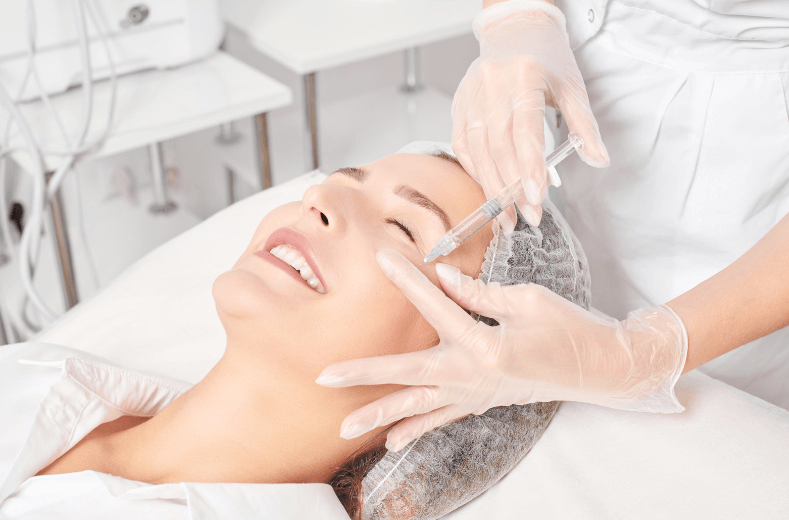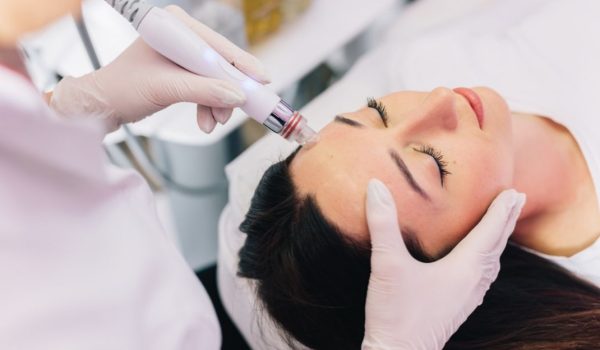Xeomin vs Botox: Which Should You Offer your Client?
-
By: Adam Diwan
-
May 27, 2024
Botulinum toxin injections are a popular choice among patients seeking non-surgical facial rejuvenation.
Two of the most well-known products in this area are Xeomin and Botox.
For healthcare professionals, understanding the differences between these two options is needed for making informed decisions about which to offer their clients.
This article aims to compare and contrast Xeomin vs Botox, focusing on their active ingredients, formulations, results, side effects, storage requirements, patient experiences, pricing, and clinical studies.
By the end, you’ll have a clearer understanding of which product might be best suited for your practice.
Active Ingredient
Xeomin and Botox both use botulinum toxin type A to achieve their effects, but they differ in their specific formulations.
Xeomin contains incobotulinumtoxinA, a purified form of the toxin that is free from complex proteins.
This results in a naked neurotoxin, which is believed to reduce the likelihood of patients developing resistance over time.
On the other hand, Botox contains onabotulinumtoxinA, which is accompanied by accessory proteins.
These proteins help stabilise the molecule but are not active themselves.
The presence of these proteins in Botox can sometimes lead to antibody formation, potentially reducing its efficacy in some patients.
Understanding these differences in active ingredients is needed for clinical use, as they can influence patient outcomes and long-term treatment efficacy.
Formulation

Xeomin’s formulation is unique due to its purity; it contains only the active neurotoxin without any accessory proteins.
This pure form means Xeomin is less likely to cause immune responses, making it a suitable option for patients who may have developed resistance to other botulinum toxin products.
Botox, however, includes accessory proteins in its formulation.
These proteins are intended to stabilise the botulinum toxin molecule, but they do not contribute to its therapeutic effect.
While these proteins can be beneficial for stability, they may also increase the likelihood of antibody formation, which can reduce the treatment’s effectiveness over time.
The differences in formulation also impact storage and handling.
Xeomin does not require refrigeration before reconstitution, providing greater convenience for clinics.
In contrast, Botox must be stored under refrigeration both before and after reconstitution, necessitating more stringent handling procedures.
Results
The results of Xeomin and Botox treatments are quite similar, but there are some distinctions worth noting.
Xeomin typically produces results within 3-4 days after injection, with full effects visible by around 7 days.
These results can last between 3-6 months, depending on individual patient factors and the area treated.
Botox also shows effects within 3-4 days, with maximum results usually apparent at around 14 days.
The duration of Botox’s effects is generally 3-6 months, similar to Xeomin.
However, some studies suggest that Botox may last slightly longer in certain patients, although this can vary widely.
Variability in results is influenced by factors such as the patient’s age, skin condition, and muscle activity.
Both products require follow-up treatments to maintain the desired results, and healthcare professionals should consider these factors when recommending either product to their clients.
Side Effects

Both Xeomin and Botox have well-documented safety profiles, but like all medical treatments, they can cause side effects.
Common side effects of Xeomin include headache, injection site pain, and eyelid drooping.
These side effects are typically mild and resolve on their own within a few days to a week.
Botox shares similar common side effects, such as bruising at the injection site, headaches, and mild flu-like symptoms.
Eyelid drooping can also occur with Botox, although it is generally temporary.
A comparison of the side effect profiles shows that both products are well-tolerated, with no significant differences in the incidence or severity of side effects.
Patient safety and satisfaction should be prioritised, and healthcare professionals should monitor for any adverse reactions following treatment.
Storage
Storage requirements for Xeomin and Botox differ significantly, impacting their practicality in clinical settings.
Xeomin can be stored at room temperature before reconstitution, which simplifies storage logistics and reduces the need for refrigeration facilities.
Once reconstituted, it should be used within 24 hours if kept at room temperature or within 30 days if refrigerated.
Botox, on the other hand, must be stored in a refrigerator both before and after reconstitution.
This requirement allows for the stability and efficacy of the product but adds a layer of complexity to its handling and storage.
Understanding these storage requirements is needed for clinics so they maintain the efficacy and safety of the products they use.
Patient Experience

Patient feedback is an essential consideration when choosing between Xeomin and Botox.
Many patients report high satisfaction with both treatments, citing improvements in their appearance and self-confidence.
Patients often appreciate Xeomin for its perceived natural results and the reduced risk of developing resistance due to its pure formulation.
Conversely, some patients may prefer Botox due to its longer-standing reputation and extensive clinical history.
Factors influencing patient preference include the speed of results, the duration of effects, and the overall experience with the treatment process.
Managing patient expectations through clear communication about the benefits and potential side effects of each product is needed to achieve high satisfaction levels.
Price
The cost of Xeomin and Botox can vary based on several factors, including the brand’s reputation, formulation, and geographic location.
Generally, Xeomin may be slightly less expensive than Botox, but the difference is often marginal.
For clinics, the choice between Xeomin and Botox should also consider the cost-effectiveness of each product.
Xeomin’s room temperature storage capability can reduce costs associated with refrigeration and handling, potentially making it a more economical choice for some practices.
Insurance and out-of-pocket costs for patients should also be considered.
Both products are typically not covered by insurance for cosmetic use, so cost-effectiveness from a patient’s perspective is also required.
Clinical Studies
Numerous clinical studies have evaluated the efficacy and safety of both Xeomin and Botox.
Studies on Xeomin highlight its effectiveness in treating frown lines, with results comparable to those of Botox.
Research also indicates that Xeomin’s pure formulation reduces the likelihood of antibody formation, potentially extending its efficacy over time.
Botox has a long history of clinical use and extensive research supporting its efficacy for various indications, including cosmetic and medical applications.
Clinical trials consistently show high patient satisfaction and significant improvements in the appearance of fine lines and wrinkles.
Comparing these studies reveals that both products offer similar levels of efficacy and safety, allowing healthcare professionals to choose based on their clinical experience and patient preferences.
In summary, both Xeomin and Botox are effective treatments for reducing the appearance of fine lines and wrinkles.
The key differences lie in their formulations, with Xeomin offering a purer form of botulinum toxin, which may reduce the risk of resistance.
Botox’s longstanding reputation and extensive clinical history make it a trusted choice for many practitioners.
When deciding which product to offer your clients, consider the specific needs and preferences of your patients, as well as the practical aspects of storage and handling.
Evaluating the clinical evidence and patient feedback can also guide your decision-making process.
Ultimately, both Xeomin and Botox are valuable tools in a healthcare professional’s arsenal for achieving patient satisfaction and improving cosmetic outcomes.
If you need more help and support, or have questions about any of these products you wish to use with your clients, contact us here at Revolve Medicare.
Related Posts
-
By: Adam Diwan
-
September 23, 2024
How to Start an Aesthetics Business
-
By: Adam Diwan
-
September 23, 2024
Top 5 Fat-Dissolving Products to Use in Your Clinic
-
By: Adam Diwan
-
July 23, 2024
Top 10 Vitamin Injections for Health and Beauty
-
By: Adam Diwan
-
July 2, 2024
How to Switch from Saxenda to Mounjaro
-
By: Adam Diwan
-
June 25, 2024
Mesotherapy vs Microneedling: A Side Effect Guide
-
By: Adam Diwan
-
June 18, 2024











